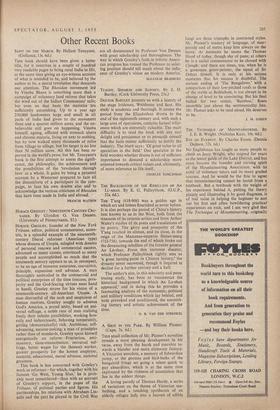TEE T'ang (618-906) was a golden age in which art
and letters flourished as never before. It is also perhaps the period of China's history best known to us in the West, both from the treasures of its ceramic artists and from Arthur Waley's studies of its poets and translations of its poetry. The glory and prosperity of the T'ang reached its climax, and its close, in the reign of the Maecenas-emperOr Hstlan-tsung (712-756), towards the end of which broke out the devastating rebellion of the frontier general An Lu-shan. From this immense disaster, which Professor Pulleyblank rightly sees as 'a great turning-point in Chinese history,' the dynasty never recovered, though it lingered in decline for a further century and a half.
The author's aim, in this scholarly and pene- trating study, has been to 'reconstruct the historical background in which An Lu-shan appeared,' and in doing this he provides a fascinating analysis of the economic, political and military conditions which lay behind, and both provoked and conditioned, the astonish- ing literary and artistic achievement of the time.
0. B. VAN DER SPRENKEL


































 Previous page
Previous page